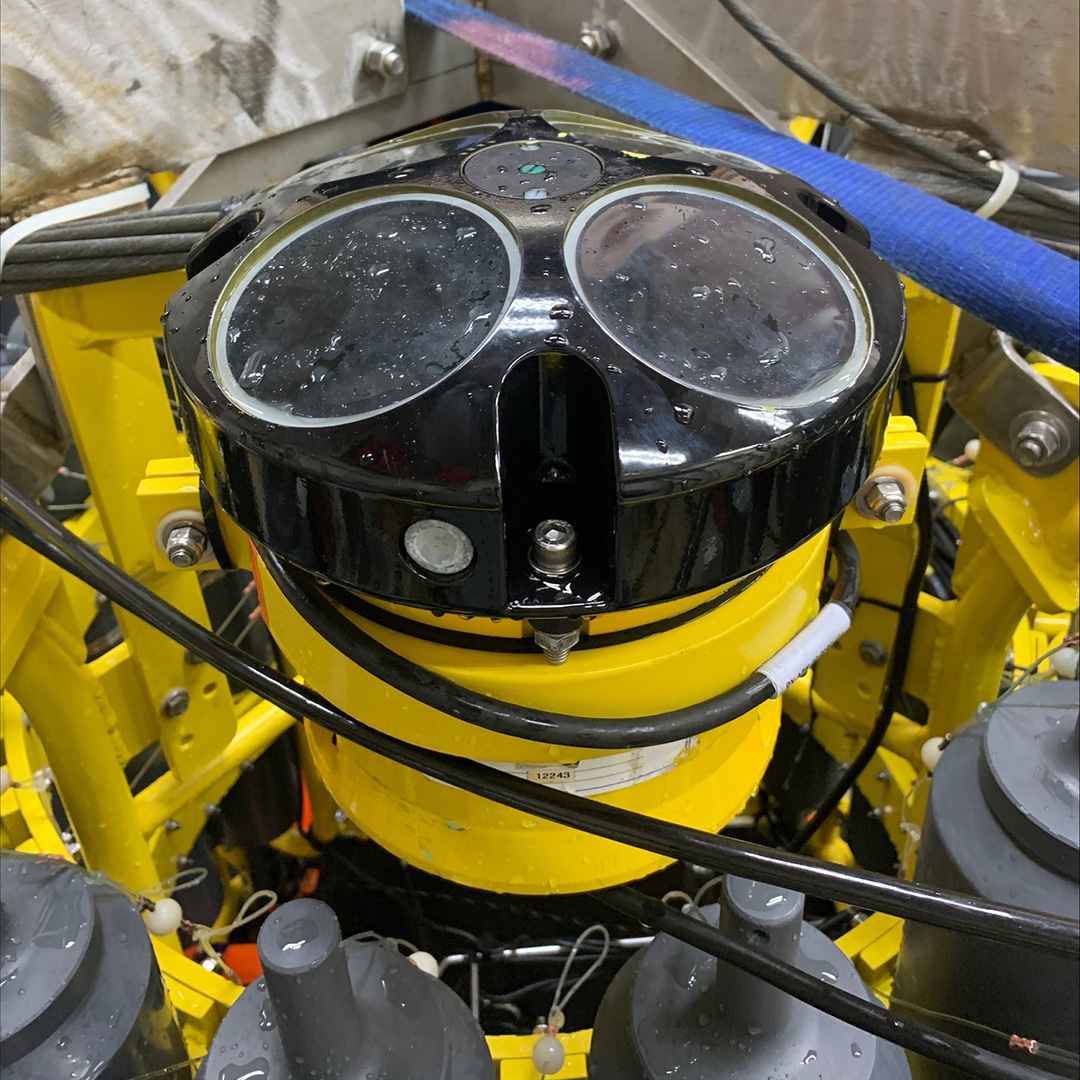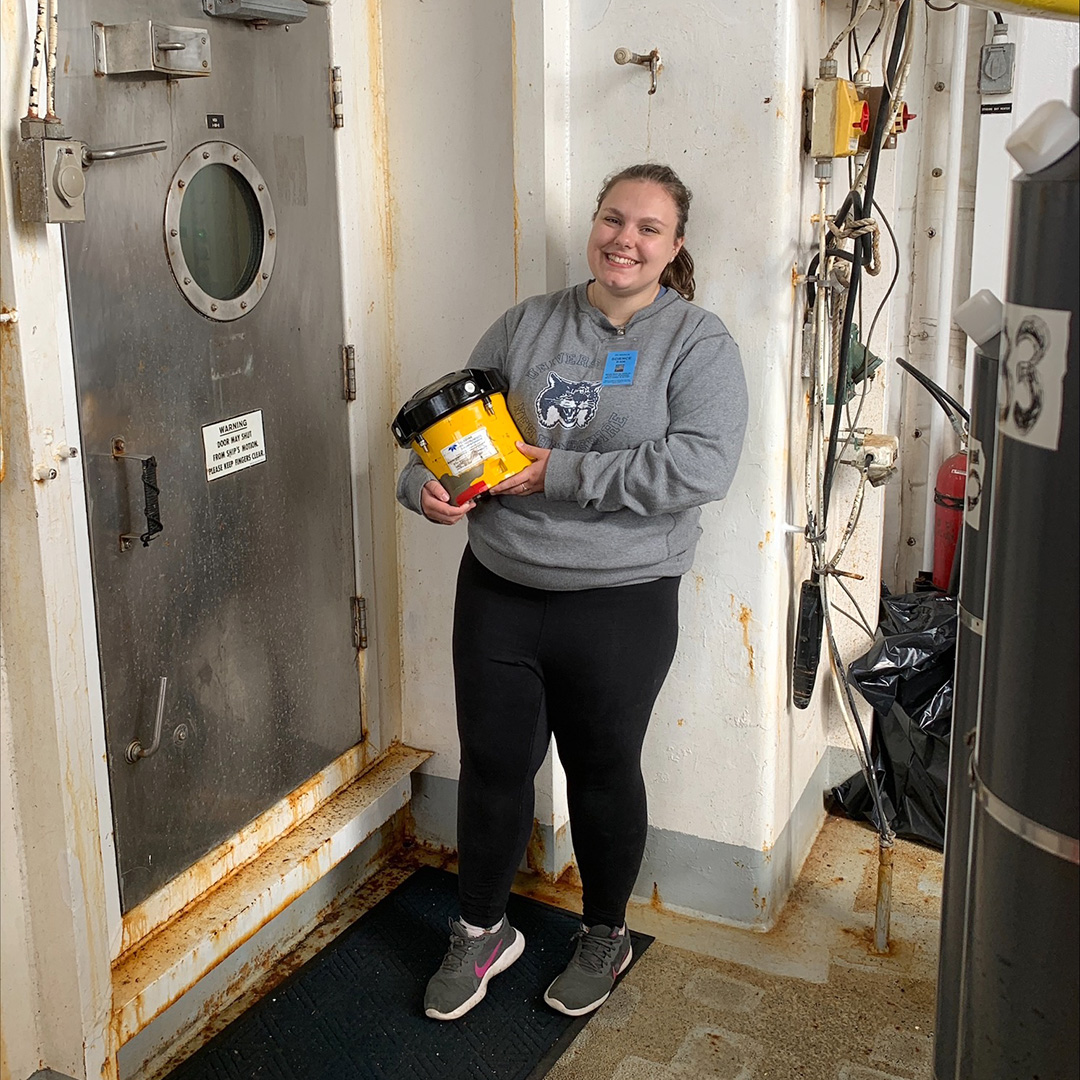GO-SHIP IO5: Studying the Ocean with Sound
Measuring ocean currents with sound using the Acoustic Doppler Current Profiler (ADCP)
I05 Log: Studying the Ocean with Sound
The Acoustic Doppler Current Profiler, or ADCP, is an instrument that uses sound to measure the currents within the ocean. It does this by sending short pings of sound at a constant frequency through the water column. When the sound hits a particle, such as: the seafloor, marine life, or other particulates, the sound returns to the ADCP. If the particles are moving away from the ADCP, the sound returns at a lower frequency. If the particles are moving towards the ADCP, the sound returns at a higher frequency. This difference in frequency from the initial pings to the receiving pings are called the Doppler shift. By measuring the Doppler shift and the time it takes for sound to return to the ADCP, we can measure current speed, turbulence, and more! On I05, we are using a method called the Lowered Acoustic Doppler Current Profiler (LADCP). In this method, two ADCPs, one facing up and the other facing down, are attached to the CTD carousel, and lowered into the ocean, where we can measure both horizontal and vertical current velocities throughout the water column.
“I am so grateful to the U.S. GO-SHIP, Scripps Institution of Oceanography, Brendan Carter, Kay McMonigal, and my PI, Andreas Thurnherr of Columbia University’s Lamont-Doherty Earth Observatory for having me on I05 this year.” says Lydia Pinard, LADCP watch-stander and master’s student at the University of New Hampshire.
“As someone with a background in physical oceanography, I have had some experience working with ADCPs in a classroom setting, but it’s nothing like being out here. A little over two weeks into the cruise I’ve picked up additional skills, replaced more cables than I can count, and strengthened my self-confidence as a scientist.
“The LADCPs are a complex system, and a lot can go wrong. I was nervous about this when I first started, but I have found myself stepping up to the plate and solving problems quickly as they come up. The first week or so I had to replace all the cables on the CTD carousel, and it felt like my brain was getting a workout, but I felt a great sense of achievement when I was done. I can’t wait to see what these next 5 weeks bring me!”


